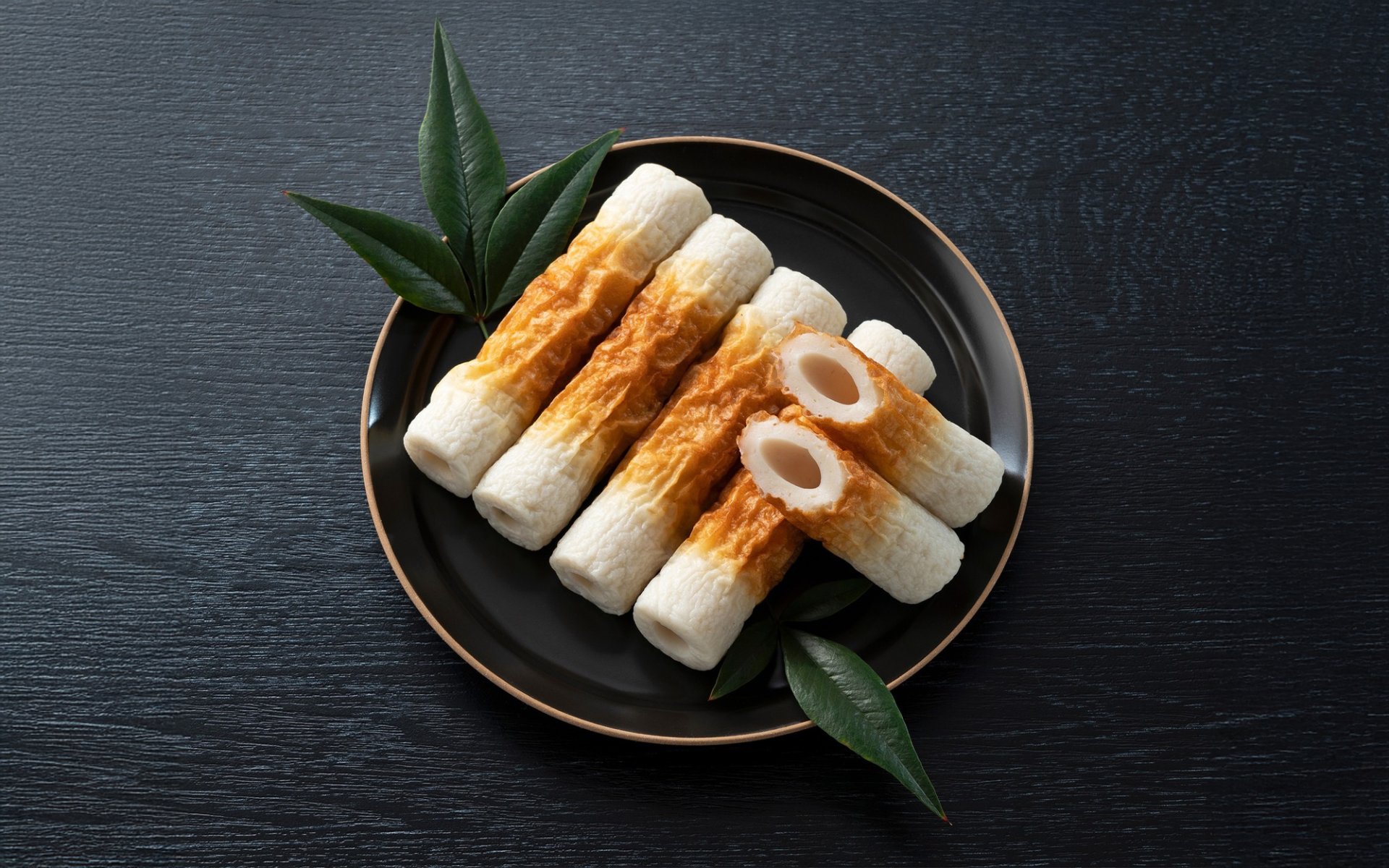Chikuwa" (ちくわ)

Among Japan's processed fish products, Chikuwa (ちくわ) is widely popular, known for its distinct shape, chewy yet soft texture, and savory flavor. Chikuwa is made from surimi (minced fish meat) mixed with salt, sugar, starch, and egg whites. It's then wrapped around a bamboo stick and grilled or steamed until cooked. This process gives it the name Chikuwa, which means bamboo ring in Japanese.
Chikuwa is a food rich in high protein and low fat, with a unique chewy, soft, and springy texture. Japanese people commonly use it in various dishes such as hot pots (Nabe), Udon noodles, and Oden. During winter, it's often grilled over charcoal and enjoyed hot with beer or Japanese sake for a perfect pairing.
Ancient Origins in the Heian Period
The precise origins of Chikuwa are somewhat obscure, but it is widely believed to have been invented during the Heian period (794-1185 AD). During this time, fish was a primary food source for the Japanese, especially among the aristocracy, who often processed it into various forms of Kamaboko, including Chikuwa.
Flourishing in the Edo Period and Regional Chikuwa
The Edo period (1603-1868 AD) was a significant era for the development of Japanese cuisine, and Chikuwa was no exception. In this period, Chikuwa became a popular street snack, with each region developing its own unique recipes and characteristics:
- Tottori Prefecture: Features Tofu Chikuwa, which incorporates Japanese tofu into the surimi mixture.
Shimane Prefecture: Known for Chikuwa made from Ago fish (flying fish), which is typically thicker than regular Chikuwa and distinctive for its grilled marks all over the surface. - Aomori Prefecture: Produces Botan Chikuwa, made using a special method that creates a pattern resembling peony petals.
- Tokushima Prefecture: Chikuwa is often served on short bamboo sticks and sold without removing the stick, making it convenient to eat.
Meiji Era Advancements and 20th-Century Diversification
The Meiji era (1868-1912 AD) saw significant advancements in Chikuwa production processes. Many food companies began commercializing Chikuwa production, and manufacturing methods were improved by adopting metal skewers and machinery instead of traditional bamboo. This allowed Chikuwa to be produced in larger quantities, more quickly, and with consistent efficiency.
In the 20th century, Chikuwa began to be consumed in various forms, leading to more creative culinary applications. It was introduced with new fillings such as cheese, vegetables, and other seafood, offering a wider range of flavors and textures. Producers also developed other shapes for Chikuwa, and some started using different types of fish to cater to diverse preferences.
Chikuwa Today : A National Dish Accessible Worldwide
Today, Chikuwa has become one of Japan's national dishes and is popular worldwide. It can be enjoyed in numerous ways, including:
- Slicing it thinly and dipping it in soy sauce or mayonnaise.
- Stir-frying it with various vegetables to add flavor and protein.
- Dipping it in batter and deep-frying it to make Tempura.
- Adding it to stewed dishes such as Oden or Tonjiru (Miso soup with pork and vegetables).
- With its healthy properties, unique taste, and versatility in various dishes, Chikuwa remains an enduringly popular processed fish product.
You can find high-quality Chikuwa at all Rimping Supermarket branches to create delicious Japanese-style dishes at home!


